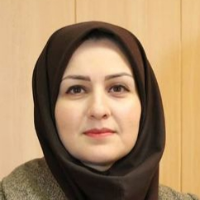A Comparative Study of Historical and Contemporary Houses in Kermanshah to Recognize Micro-Space Empowerment Methods
Author(s):
Article Type:
Research/Original Article (دارای رتبه معتبر)
Abstract:
To enhance the performance of space, as the essence of architecture, it is required to strengthen and optimally use micro-spaces. The methods applied to this end are referred to as "micro-space empowerment methods". These methods have been applied at specific times and in given places to organize space by each society to interact with the territory, history, environmental capabilities, as well as lifestyle. The present study aims to investigate the empowerment methods of micro-spaces in the home to identify effective solutions to improve the quality of contemporary housing. So, the research questions are as follows: What are the micro-space empowerment methods? How are the micro-spaces in historical and contemporary houses empowered? How can micro-space empowerment methods be applied in today's housing? The present study is qualitative research carried out using data analysis. In the present study, first, the concepts related to micro-space empowerment are redefined and micro-space empowerment methods are described. Next, three houses belonging to three Qajar, Pahlavi, and contemporary eras are selected from the three old, middle, and new textures of Kermanshah City as a source, and their micro-spaces are studied and compared by library studies, field studies, and observations. The results indicate that traditional architecture and modern architecture are different in the design of architectural elements. In traditional houses, there is a convergent spatial organization through which various aspects such as responding to lifestyle, diverse lighting and landscape, interaction with nature, and comfort, are organized and integrated, while in contemporary houses, they are provided in a divergent design. Convergent design methods require the use of micro-space empowerment methods.
Keywords:
Language:
Persian
Published:
Journal of Architect, Urban Design & Urban Planning, Volume:14 Issue: 35, 2021
Pages:
133 to 148
https://magiran.com/p2324958
مقالات دیگری از این نویسنده (گان)
-
Analytical Comparison; On the Challenges and Opportunities of Architectural Components Influencing Urban Branding in Yazd and Rasht
Rana Abbasi, *, Farah Habib
Journal of Urban Economics and Planning, -
Analysis of Privacy Hierarchies in Traditional Houses of Iran Based on The Plan Structure Through Space Syntax Approach
*, Ali Karami
Journal of Architect, Urban Design & Urban Planning, -
Analyzing the Effective Components of Improving the Quality of Teaching Architectural Design to Conservatory Students
Zeynab Moghadas, *, Hossein Zabihi
Journal of Educational Planning Studies, -
Cultural and livelihood impacts on the physical and biolospatial formation of traditional houses in Paveh
J. Honarvar, M. Rostami, M. Aznab, F. Taheri Sarmad *
Journal of Iran Cultural Research,




